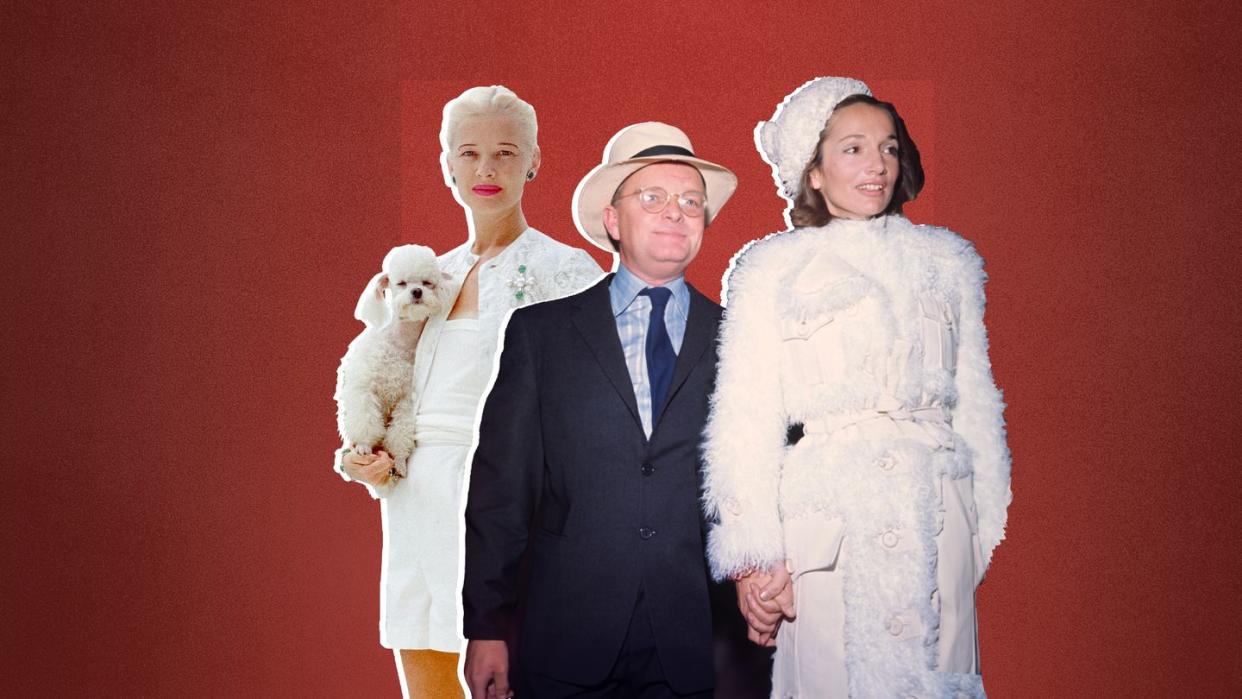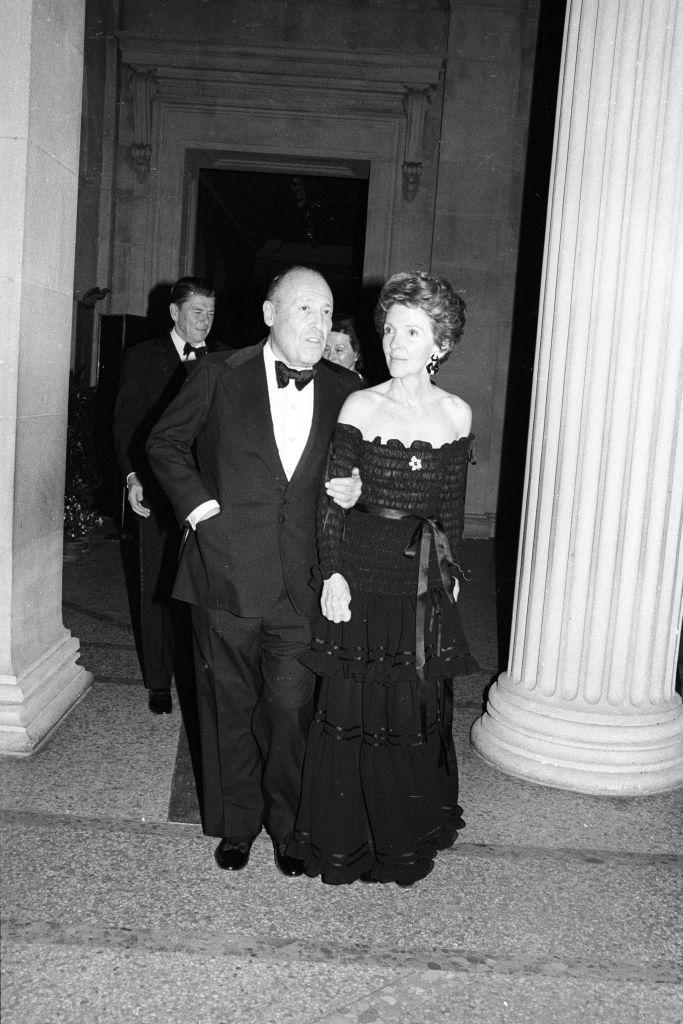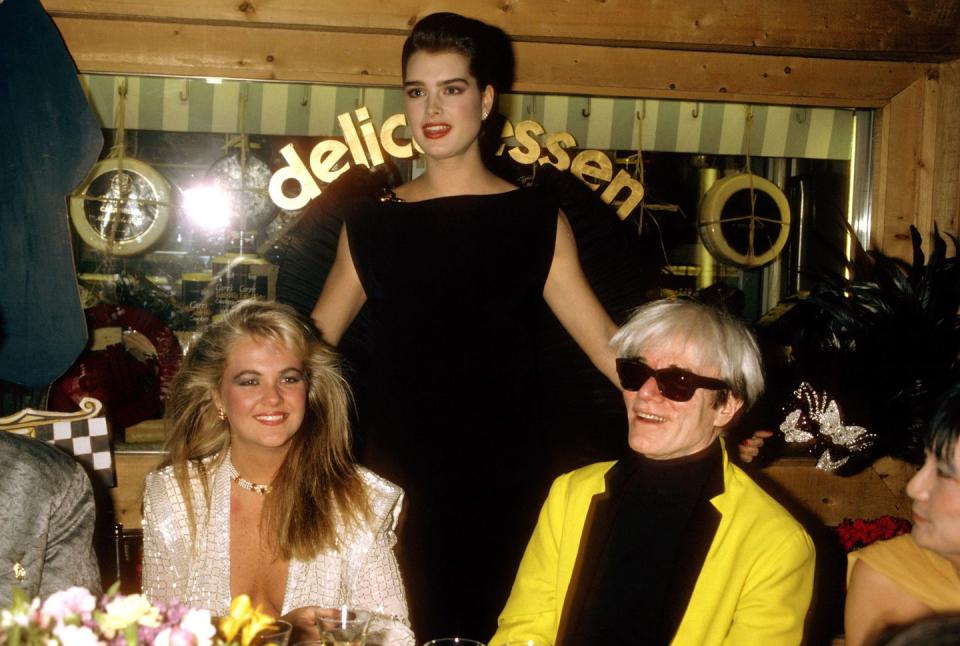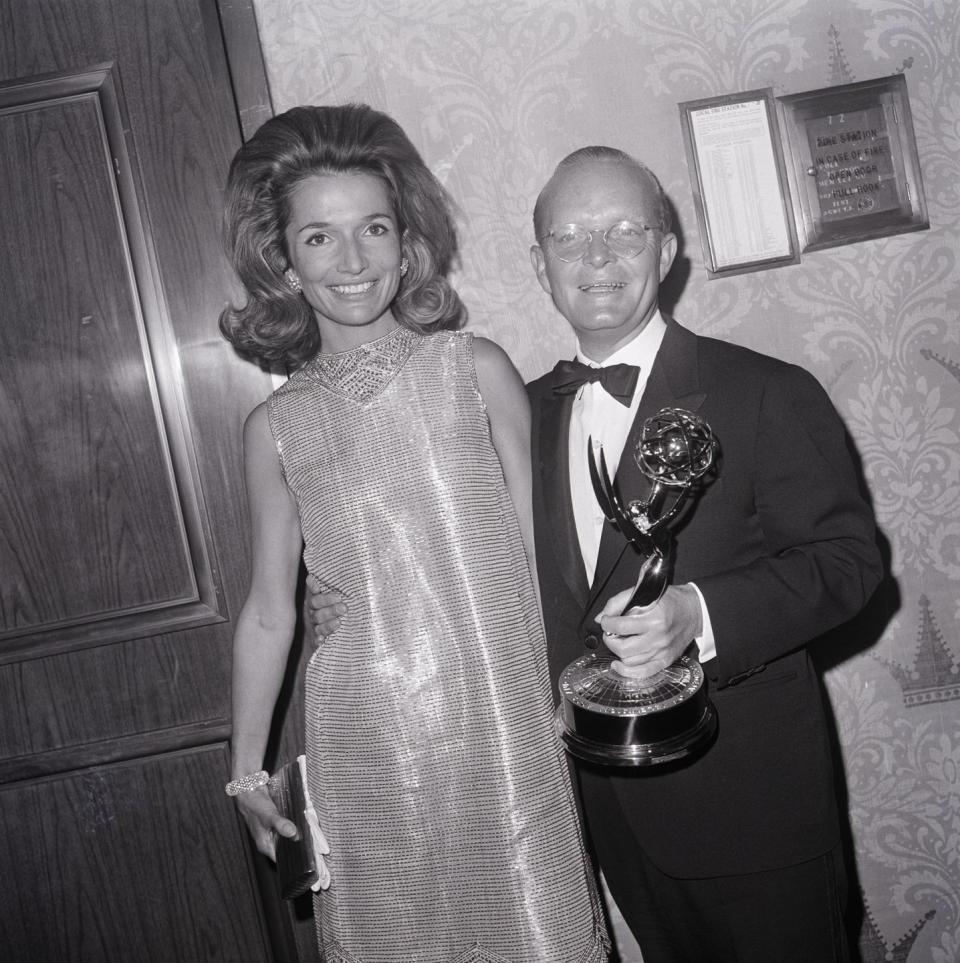Limp Wrists and Locked Jaws: Inside the Strange, Social World of Gay Men and Rich Women

"Hearst Magazines and Yahoo may earn commission or revenue on some items through these links."
“We owe them a modicum of respect! The homosexuals, I mean,” C.Z. Guest tells her friend Babe Paley on a department store escalator. The two had gone shopping after hearing their mutual friend Lee Radziwill opt out of helping end a public beef between rivals Truman Capote and Gore Vidal—and deciding to call them “two fags fighting,” to add insult to injury. Riding the escalator up toward the glove department, Guest goes on to describe her class’s reliance on “walkers,” the often-gay male companions that society women would rely on to keep them company at events. Paley affirms their usefulness beyond a shield against unwanted attention: “What’s more, they won’t drop you when you reach a certain age,” she says. “They lift you higher.” Guest staunchly agrees: “It is a vital relationship.”
It’s also the bond that’s at the center of Feud: Capote vs. The Swans, the new series—airing now on FX and Hulu—that dramatizes Capote’s falling out with a group of women including Paley, Guest, Radziwill, and Slim Keith. (That elevator scene above? It happened on Feud.) Yes, the show is about what happened when Capote published his infamous story "La Côte Basque, 1965,” which revealed the thinly veiled (if veiled at all) secrets of his closest friends, but it’s also about the singular friendship forged between gay men and their straight female friends; one that, for some of the characters, can be the closest relationship they have.
In the show’s pilot episode, Paley (Naomi Watts) is seen spooning with Capote (Tom Hollander) as only people who know and love each other deeply can. She’s mulling over how to handle a cruel, embarrassing betrayal by her Master-of-the-Universe husband and confesses to. capote, “The only person who could really hurt me is you.” Their connective tissue and understanding of each other—of how they’re both exploited by society—is what makes it so easy for both parties to both adore and wound one other.
Capote and his Swans don’t start at each other’s throats. On the contrary, their war of wits and social power begins with a unique kind of intimacy. In the mid-20th century, walkers and their wards took the form of such luminaries as Andy Warhol and Cornelia Guest (C.Z.’s daughter), Jerry Zipkin and Nancy Reagan, and Matthew Rich and Jackie Onassis. These men escorted their friends to events that were impossible or abhorrent for their husbands to attend, and made up a large part of upper crust’s social fabric. Of this relationship, between walker and walkee, Guest opined to the Hollywood Reporter, “It was a real job for Jerry Zipkin and Count Vega del Ren to take care of those ladies. They had all the info and knew everyone’s secrets. And they knew how to keep everyone amused.”

But the intimacy and the animosity that can exist between gay men and straight, rich women aren’t always mutually exclusive. While the first installment of Feud, which aired in 2017, imagined the catty skirmishes between Joan Crawford (Jessica Lange) and Bette Davis (Susan Sarandon) on the set of Whatever Happened to Baby Jane?, this time around writer and executive producer Jon Rabin Baitz— a Pulitzer Prize finalist for the plays A Fair Country and Other Desert Cities—portrays these two alternatingly friendly and hostile teams as existing on somewhat level ground, each with the power to upset, and perhaps socially ruin, one another. As Ryan Murphy, who produced the series, recently said to the New York Times, “It’s very easy to do a show where people are just nasty to each other, but feuds are never about hate. They’re about love.”
While it’s important to note that Capote and the Swans alike are living in a world very much controlled by straight men, whether neither women nor queer people were given the same respect, it’s important to note that Capote was able to occupy a space close to these women, becoming a witness to and participant in their live, not least of all because of his gayness. From the 1960s through the 1980s (or, depending on who you ask, today), walkers were both shield and accessory for society women, accompanying them to galas, parties, dinners, etc. They could dish with the girls and fend off unwanted passes, get the dirt and trade witticisms.

But if Feud: Capote vs The Swans dines on this delicate, complex relationship between gay men and straight women, it truly feasts on both the ways that these two parties cultivate a parasitic love for one another, at least on an artistic level. For every moment of intimacy between Capote and Paley, there’s another where one of her friends is dismissing him for his limp-wristed, bitchy antics. After the short story is published, Ann Woodward’s venomous hiss towards Capote in their former homebase at the restaurant is so scalding that the camera itself almost flinches in pain. Conversely, Capote, despite his devotion to these women and what they represent, has an eagerness to offer an autopsy on his friends’ lives and loves while their hearts are still beating, indicating his own willingness to make them accessory to his art. Even before writing, he is more than willing to play sides and verbally eviscerate their appearances—Capote describes Bill Paley’s mistress as a “fat ankled wildebeest”—perhaps less for how actually “ugly” these women are and more for the thrill of casting a white hot bon motte. Is that gay misogyny more the hate of women from men or the disdain of other women by other women?
But the walkers—at their core, a holdover from an era when women needed an escort at in public—have largely disappeared. Social mores and customs, even amongst the wealthy, have shifted such that, according to fashion executive Boaz Mazor in the Hollywood Reporter, “[women] don’t care about society anymore — they are happy to go out with their iPhones!” And while walkers’ queerness was an open secret, the necessity for such rituals as“the open secret” are dwindling in many ostensibly socially liberal spaces. Certainly the gay best friend, or some formulation of close relationship between gay men and straight women (across class lines), still exists and still finds itself explored in various pop culture. (One example? Currently in theaters, Jaquel Spivey is playing a revamped version of Damien, previously played by Daniel Franzese, in the movie musical remake of Mean Girls.)

Baitz’s key observation throughout the series is that the thin line between love and torment that can exist between gay men and straight women is that their affinity and antipathy are both rooted in patriarchy. Each, with their tenuous connection to that power—gay men’s maleness and straight women’s proximity to heterosexual culture—think they can exert that power over the other, but the reality is that they both also have one foot in a bear trap: gay men are seen as less than “real” men in this paradigm, and women are seen as less than men.
The intricate network of treating female peers as confidantes, competition, and transaction is only matched by some gay men’s ability to discern those social dynamics. They are both outsiders and insiders to varying degrees, both playing roles of themselves and managing how to meet the expectations of others when performing as Babe Paley (obsessed with perfection) or Truman Capote (always armed with a callously witty remark). That these particular people are in the public eye both amplifies the level of performance that they must deliver, while also making them privy to the other’s ability to cultivate and use artificiality to their social and political advantage.
While it’s impossible to generalize writ large about gay men and straight women, Feud: Capote vs. The Swans uses midcentury New York society as a clever microcosm of changing social mores, aesthetic trends, and sexual and gender politics to come to an uneasy, if not pessimistic conclusion about such a tempestuous love affair between two social groups. Gay men and straight women need each other as much as they need to upset and disrupt the powers and systems that control their lives, shimmering and brittle as they may be.
You Might Also Like

